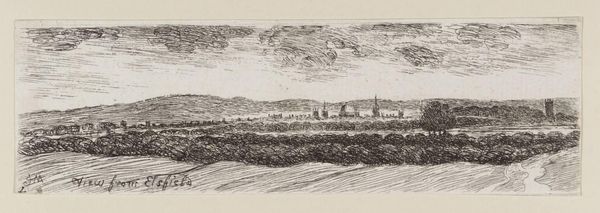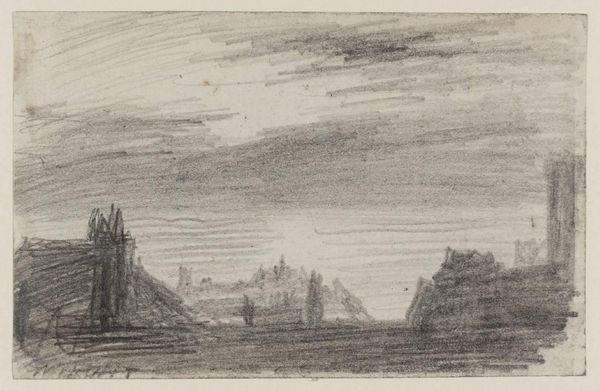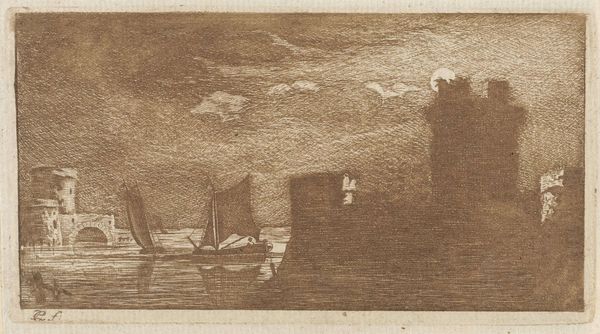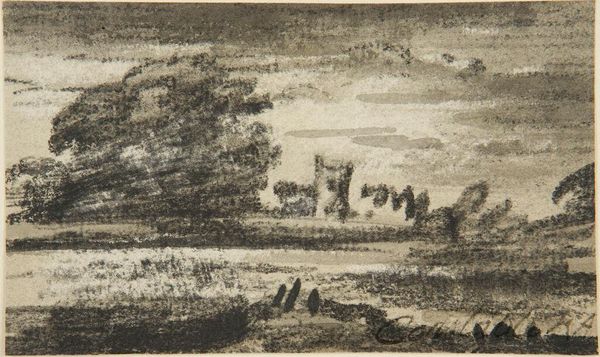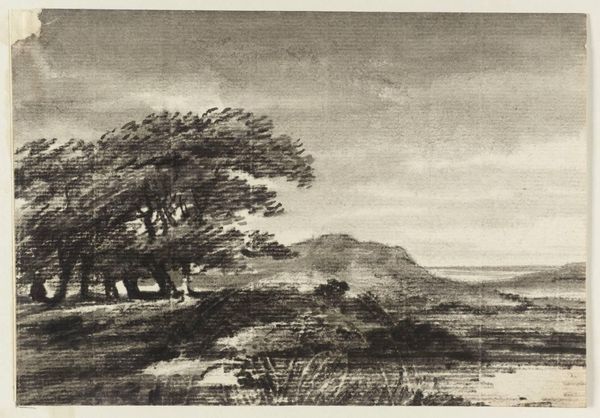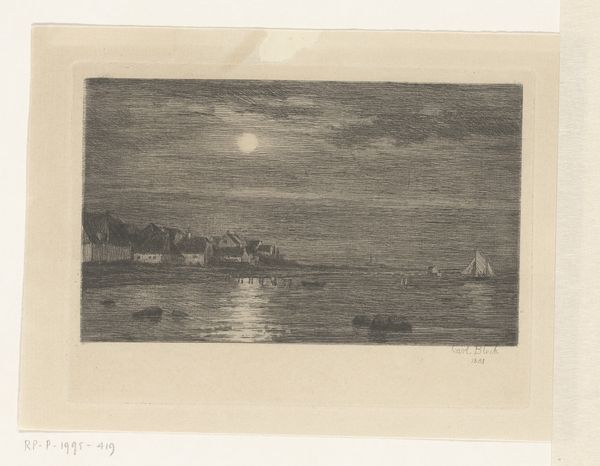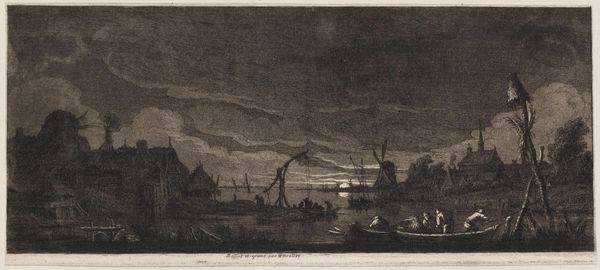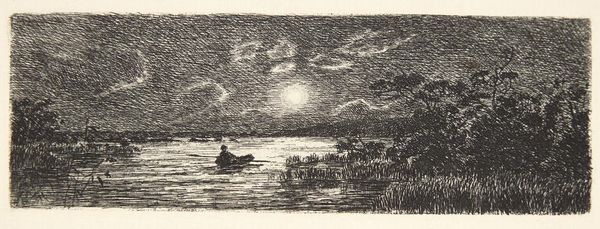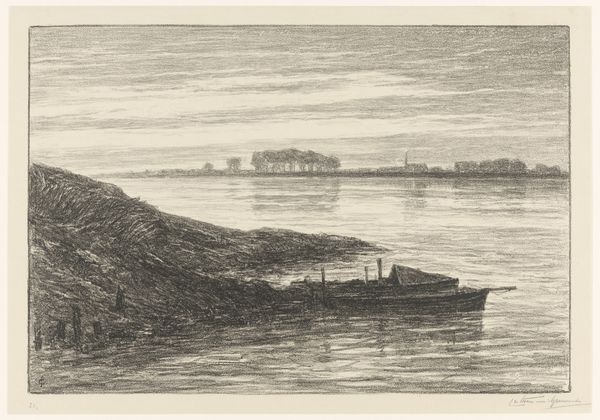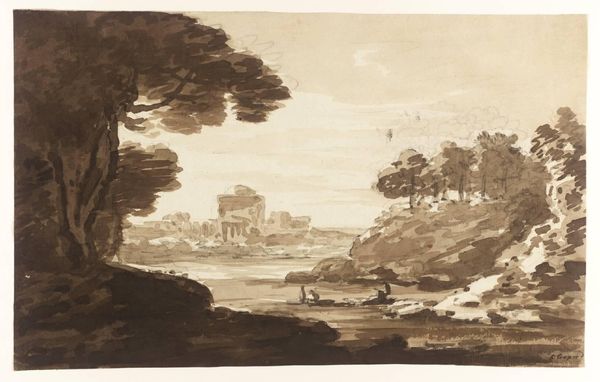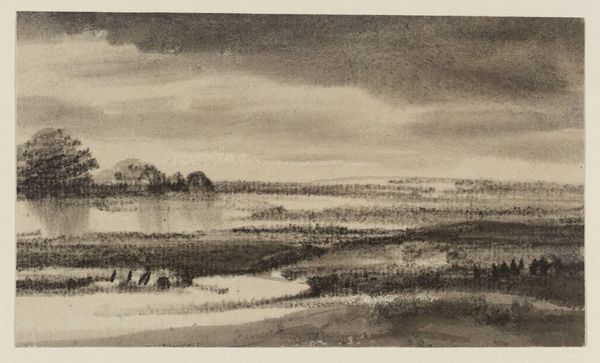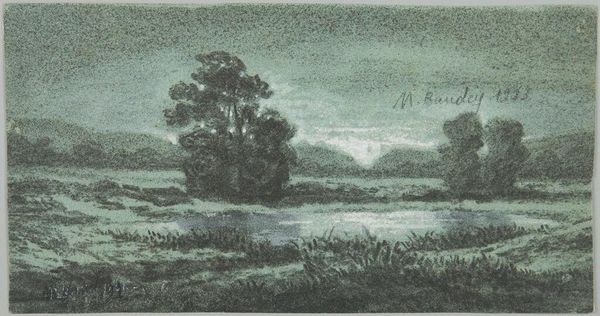
Dimensions: 225 mm (height) x 315 mm (width) (bladmaal), 109 mm (height) x 148 mm (width) (plademaal)
Curator: We're now looking at Carl Bloch's etching from 1881, "Strandparti ved Hellebæk. Måneskin," or "Beach Scene by Hellebæk. Moonlight". Editor: It's an evocative nocturne. The heavy sky seems to press down, and the moon's reflection shimmers rather ominously on the water. A real masterclass of chiaroscuro, especially for a print. Curator: Indeed. It's a relatively late work by Bloch, created near the end of his life. He was celebrated during his life, becoming famous for his history paintings, particularly those depicting biblical scenes for the royal chapel at Fredensborg Palace. But this... it speaks to a different facet of the time. We often think of Danish Golden Age painting as sunny, pastoral scenes. Editor: But here, we have a Romantic sensibility creeping in. It's more aligned with contemporary anxieties around industrialization and modernization. The small boat on the right looks rather insignificant against the immensity of the sea and sky. Even the light seems fragile. Curator: Etchings such as this became increasingly popular in the latter half of the 19th century, a way for artists to reach a wider audience with affordable artworks that explored the mood and atmosphere of places, even as those places were rapidly changing. This work's power comes from how the composition relies on this stark tonal contrast and tight linework. Editor: Yes, Bloch demonstrates remarkable control. The horizontality of the composition—the layering of the sky, land, and water— creates a strong sense of depth, while the precision in depicting architectural details creates a believable rendering of space. This makes the almost ethereal glow of moonlight seem all the more remarkable and symbolic. Curator: Looking at it now, I’m reminded of the shifting landscape of art patronage at the time. Religious commissions were declining. Art was starting to exist beyond traditional power structures. An artist like Bloch turning his hand to more accessible media tells us much about that cultural transformation. Editor: The print certainly reveals a complexity beyond the simple appeal of Realist depiction. The balance between observation and that rather dramatic use of light make this quite compelling. Curator: Absolutely, and perhaps it also represents a more introspective turn in Bloch’s work. It moves beyond a grander, moralising painting that he was originally celebrated for. Editor: Precisely, the moonlight's silent drama offers plenty to contemplate.
Comments
No comments
Be the first to comment and join the conversation on the ultimate creative platform.
